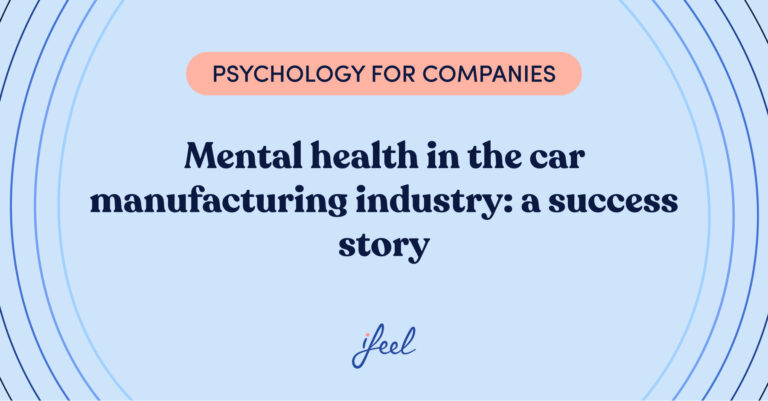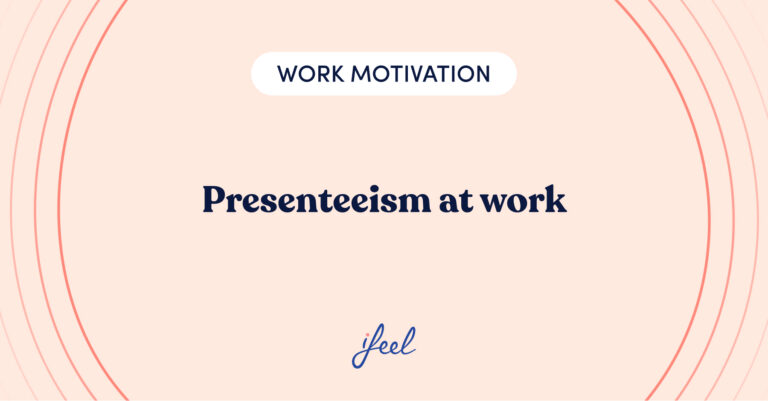The ROI in employee well-being programs is critical when implementing a corporate strategy to take care of people, especially in terms of psychological well-being and the various factors that can harm or enhance it. In this post, we discuss this issue that is so influential when making major decisions in an organization.
ROI in employee well-being programs
Anyone who has ever made a relatively large-scale proposal to their bosses knows that the return on investment must be one of its primary credentials. Everything must be measured, and everything must be beneficial, even in economic terms: a clear and sufficient return on investment is the condition without which specific actions are not considered viable, especially those that involve a significant financial effort for organizations.
Assuming in advance that the implementation of corporate well-being programs will have to be more than justified for financial departments is a challenge for HR departments. They must work extra hard to argue quantitatively for the qualitative effectiveness that is already well known when implementing corporate well-being programs.

The ROI in employee well-being programs: cost or investment?
The conflict between spending and investing is one of the most frequent neuroses in many people, especially those with a conflictive relationship with money. Therefore, it is also present in any field that involves managing or administering any resources, from the board of directors of a company to a country’s government.
Spending wears out and, therefore, weakens even in the short term. For this reason, it tends to be interpreted as a loss for the company. On the other hand, it is optimistic but never unconditional but is made based on a promise: the return on that investment. From this point of view, spending focuses on the present, while investment looks to the future. Spending involves fear and therefore tends to be avoided, while investment anticipates and so it must be leveraged according to the resources available and the objectives set by the company.
This is the tension on how the so-called “resource mobilization” should be interpreted (a euphemism used as a middle ground when one does not want to talk about spending but does not know how to argue for investment either). The ROI in employee well-being programs is the favorable or unfavorable result that emerges as the final synthesis of the process.
Properly positioning the ROI
The quality of ROI in employee well-being programs is directly related to the quality of the well-being program in question, both in its approach and in its implementation.
The former includes a specific needs and resources survey capable of targeting the team’s current situation. In addition, it must have a realistic objective proposal that can be operative and evaluated on an ongoing basis, both in its qualitative and quantitative aspects.
The program’s implementation must be accompanied by a final evaluation capable of gathering the results in an orderly manner so that conclusions can be drawn that are useful for the company’s managers and other employees.
Crunching the numbers for the well-being program
One of the most significant difficulties corporations encounter when considering ROI in employee well-being programs is the quantification in economic terms of the benefits obtained by the employees who have participated in the program.
To overcome this difficulty, it is essential to broaden the focus and allow this quantification to take a detour until it reaches the data we are interested in. From this point of view, if we want to find out directly and quickly how much money the company has earned or how much it has saved just by implementing a psychological well-being program, it may be challenging to find out.
However, let’s compare the figures for medical leave due to mental health problems, absenteeism, or staff turnover – which are phenomena whose economic impact is probably already calculated in advance – with the figures for the same phenomena after the program has been implemented. It is possible to have a reasonably concrete perspective on the ROI in employee well-being programs.
New times for ROI in employee well-being programs
In any case, and despite the corporate obstacles encountered in a company’s human capital care strategy, there is good news.
The renewed prestige of psychological health care as a good and visible tool for many people has invited many companies to listen more carefully to the need to implement employee well-being programs. This also implies openness to listening to new ways of gauging the return on that investment.
In this context, we can consider that there is a bit more leeway in recent times in terms of the rigidity of the justifications required in terms of ROI in employee well-being programs.

Emotional well-being for companies
At ifeel, we want to help companies take care of their employees in the most comfortable way for everyone and the most profitable way in qualitative and quantitative terms. Our team of psychologists specializing in well-being at work has created an emotional well-being program for companies.
Through this partnership, which is already yielding very positive results in the organizations they trialed, HR managers can receive personalized, data-driven advice on improving the psychological well-being of their teams. In addition, this program offers employees a comprehensive mental health care service structured at different levels according to their needs. Try our program now to see all its benefits.
Don’t forget to visit our Resources section, which contains interesting content such as podcasts, HR Guides, or interviews with leading HR managers. In addition, we have a Psychosocial Risk Factors Template which you can use to comply with the requirements of the Labor Inspection.
We hope you found this post about ROI in employee well-being programs interesting and helpful. Would you like more information about our emotional well-being program for companies? Simply request it, and we will contact your team as soon as possible.










